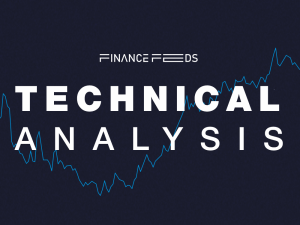Tier 1 bank tug of war: FX liquidity crunch and last look execution dogma makes the ECNs go all out for retail FX market share
Banks have begun to come back to the FX liquidity provision fold, but are still championing last look execution. Brokerages and regulators have begun to take this to court, and the ECNs and market makers need to define their value proposition. We look at how the large ECNs are going down the transparency route and what the differences are

The status quo within the global FX order execution landscape is that the banks dominate due to their ability to pick and choose which companies to extend prime brokerage agreements to, and indeed with whom to maintain them long term, despite their predilection for last look execution and pretty much having the entire risk management and order processing procedure firmly weighted in their favor.
Although many of the world’s largest FX dealers are now opening up their prime brokerage divisions once again to the OTC sector after over a year of extreme and almost all-encompassing restrictions on the extension of counterparty credit, the deal that is received by OTC FX and multi asset brokerages is uniform across the entire banking sector.
Uniformity in this case means being subject to last look execution, which is a massive moot point among commercial trading entities and prime of primes, and has now reached the regulatory think-tanks which have demonstrated equal disdain for it, as well as the do-as-I-say non-accountability which prevails insofar as brokerages continually having to jump through hoops to maintain direct market access and continue to offer aggregated liquidity feeds to retail brokerages.
Cost, a constant nagging possibility that a counterparty credit agreement could be terminated, and the last look practice which is instrumental to many single dealer platforms are factors that are unpleasant realities within the dealing desks and trade processing divisions of most brokerages, however it is widely tolerated because Tier 1 bank liquidity is the top of the market.
With the banks coming back into the fray, market makers which have likely been very quietly mopping up some of the business that the banks have rejected, are now having to once again demonstrate their competitive edge.
Last week, XTX Markets removed its discretionary latency buffers in the last look window when trading with direct counterparties on a disclosed basis, using the terminology “Zero Hold Times” or ZHT in the world of three letter acronyms in which we have so long operated.
XTX Markets, along with Citadel Securities, are two of the most prominently used electronic communications networks (ECNs) of non-bank institutional liquidity and have been building up their base of prime of prime brokerages with whom to use as a distribution channel for their liquidity to retail brokerages which are in turn clients of the prime of prime brokerages, and now operate with the vast majority of companies worldwide.
At a time during which the banks are beginning to realize that the complete curtailment of counterparty credit to FX firms is absolutely counter to their core business activity and is a revenue stream that they cannot afford to ignore, last look has begun to come out of its stalemate situation and is now under the microscope, not only of the regulators, but of a far more aggressive force, that being the litigation suits brought by brokerages.
It was (in my opinion for many years! – Ed) inevitable that the banks, which operate rather like an overbearing and irreproachable father-in-law, would eventually be taken to task by their very own customers.
FinanceFeeds has, during the past few weeks, extensively detailed the litigation instigated by Alpari against several Tier 1 banks
A senior executive within a large American non-bank institutional FX company recently explained his perspective to FinanceFeeds.
“In statistical and absolute dollar PnL terms, 100-300ms last look does very little on benign order flow when makers have good pricing systems and attempt to fill all profitable orders. Most of the venues cap last-look at 100-200ms and require fairly high average fill rates for market-makers. Hotspot publishes their requirements, so they’re worth referencing” he said.
“In other words, in practical terms, last-look doesn’t do much of anything at all when handling retail, small, or GUI order flow. If a new order is randomly submitted against a $20 spread, it’s not very probable that the order goes from being worth $20 for the maker to <$0 w/in 100ms. That’d require a fairly large jump in price for these markets, which is pretty unlikely during any random 100ms window of time” continued the senior executive.
“Put another way, if a maker were to show pricing at, say, a 0.2pip spread (typical), taker orders were randomly in time against that spread, and they maker only filled orders that appeared profitable after 100ms, I’d bet they’d probably fill >98% of orders. The 2% rejected would probably be close to 0 value anyhow, so not a big PnL impact for either maker or taker. I’ve seen first hand examples of essentially this exact scenario” he continued.
This may well be the case for the most part, however Alpari maintains that significant damage was done to its business over a long period of time due to the banks picking and choosing which trades to reject and which to take, when retail firms and prime of primes cannot do that lower down the liquidity chain.
FinanceFeeds spoke to an executive within a large Tier 1 bank last year on this subject, looking at how Tier 1 banks can compete with ECNs and institutional non bank market makers which detail very aggressive client onboarding criteria in order to fill the liquidity void that had been created by banks curtailing their services to prime of primes. The consensus during that conversation was that large market makers may well provide excellent spreads and are a means of avoiding extensive credit checks and submitting large balance sheets in order to gain credit, but stated that in some cases, the fill rate can be as low as 60%, which is far lower than that of a bank, even if last look rejection is being used fervently.
Last year, Barclays’ corporate standpoint on the reasons why it stands very firm on its continued use of last look methodology on its BARX platform is that being one of the world’s largest interbank FX dealers, it does not generally seek to reject trade requests. However, the bank considers electronic spot FX market-making to be a highly competitive industry and this effectively exposes the liquidity provider to the risk of trading on incorrect pricing.
Barclays maintains that last look functionality is used to protect against these risks and allows liquidity providers to show considerably tighter electronically streamed prices than they otherwise could – something that the bank considers beneficial to every user of electronic FX trading platforms and is very hard line with regard to this.
The bank is aiming to get at least a 10 per cent return on capital from its markets clients and has recently launched a computer system called Flight Deck to help rank customers based on their returns levels and identify those who are currently not making the grade.
The adoption of zero hold times by XTX Markets represents an attempt by the company to coerce other market-makers to move away from extensive periods of price checks.
XTX Markets has followed JP Morgan in having publicly stated in its execution policy in May last year that it does not apply the discretionary latency buffers when pricing last look streams. JPMorgan is now the largest Tier 1 FX interbank dealer by market share and volume, trouncing Deutsche Bank and Citi, who dominated for over 30 years.









